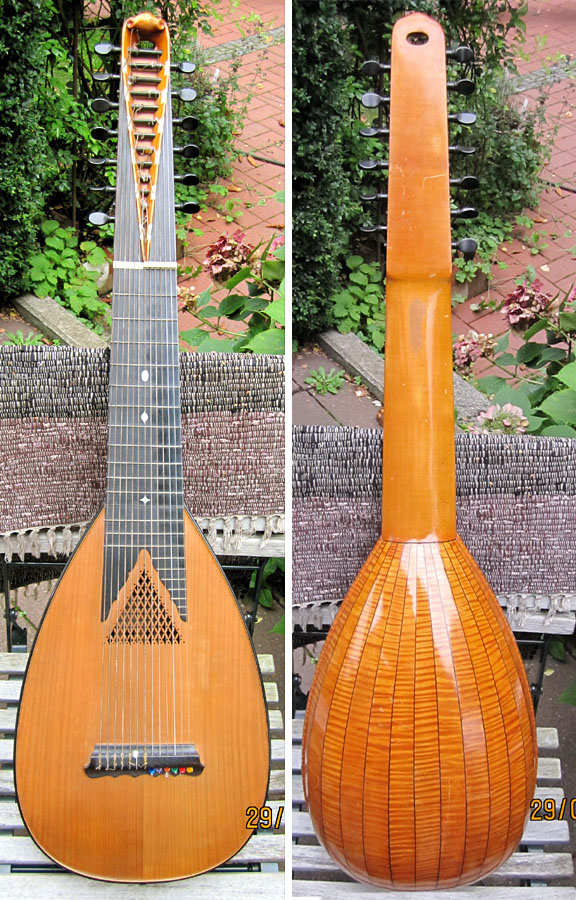Here, as promised, are the latest treasures collected by Rainer Krause.
This first is a Viennese guitar with 4 theorboed basses by C. F. Bauer, whom I see is not yet in my Encyclopedia of makers…
Rainer says this Bauer – from Klingenthal (Saxonia) – worked for a time for Stauffer, and this instrument was likely built between 1840 and 1850.
The two most distinctive features are of course the double soundholes, and the off-kilter neck, mounted in such a way as to center the 10-string bridge on the body. Rainer, could that bridge be original?
The next instrument is not a harp guitar, though built by a frequent builder of them, Ludwig Reisinger.
I don’t know what to make of this – a hybrid of a hybrid, I guess!

Isn’t it gorgeous? It appears to be a single-neck version of the common “theorboed guitar-lutes” (basslaute) of the period – meaning, a 6-string neck tuned like a guitar, and a number of floating basses, with a lute body. This 7-bass instrument may have used either the chromatic or diatonic tuning, but the latter certainly seems logical as Reisinger supplied frets.
It was made in Vienna in 1916.
Don’t you love the soundhole/fretboard design?! Not to mention one-of-a-kind headstock.
Thanks for sharing, Rainer!






